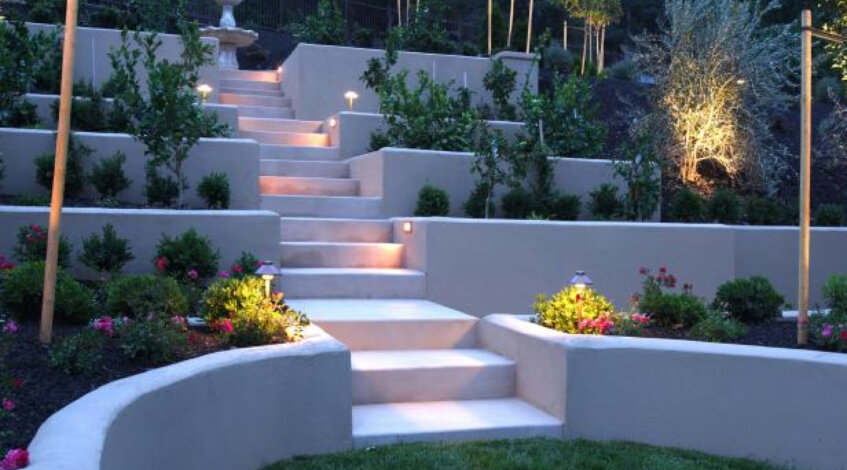Introduction
The concept of hardscaping, a crucial component of a well-designed outdoor space or garden, has gained significant popularity over the years. By utilizing hard, inanimate materials like stone, concrete, and brick, homeowners can achieve a unique, functional, and aesthetically pleasing outdoor environment. If designed carefully and strategically, hardscaping design can work very well with the Canadian climate and landscape. This article provides expert tips and tricks for all aspects of hardscaping design in Canada that will help create an attractive, functional, and durable outdoor space.
Understanding the Concept of Hardscaping
Before venturing into hardscaping, it’s essential to first understand what hardscaping entails. Unlike landscaping, which primarily deals with plants, trees, and flowers, hardscaping involves non-living elements, such as walkways, patios, retaining walls, fire pits, and decorative features. These forms a practical framework providing functionality, aesthetics, and a sense of organization in an outdoor space.
Choosing the Right Materials for your Hardscaping Project
The choice of materials for your hardscaping project significantly influences the functionality, durability, and overall look of your outdoor space. It’s important to select materials that can withstand the extreme weather conditions common in Canada.
Natural stone, for instance, is a highly suitable material because of its durability, classic appeal, and versatility. It resists freeze-thaw cycles that are prevalent in Canada’s winter season. Concrete is another robust and flexible material for hardscaping. It can be moulded into many shapes and styles and has an excellent resistance to wear and tear.
Strategic Planning and Designing
Strategic planning is crucial in hardscaping design, as every addition should contribute to the overall aesthetics and functionality. One must start with a comprehensive layout, taking into consideration the current landscape, the house architecture, and personal preferences.
The hardscaping elements should blend well with the softscaping (plants, shrubs, and trees), creating a harmonious balance. Walkways and patios should be designed keeping in mind the traffic flow and the functionality. Drainage is another crucial aspect that needs careful planning. Properly designed hardscapes should redirect rainwater away from the house and prevent pooling or flooding.
Maintaining the Hardscape
Maintenance is key to keep your hardscape looking good as new. For areas with heavy snowfall, prioritize snow removal from your hardscapes to reduce the risk of damage.
Cleaning your hardscape periodically can prevent the buildup of dirt, grime, and moss. Depending on the material used, it might be beneficial to apply a sealant to enhance its resistance towards weather elements.
Balancing Aesthetics with Functionality
While aesthetics are vital in hardscaping, functionality should not be compromised. Practical elements such as lighting, heating elements for colder months, sufficient seating, and shade for hot summer days should be considered.
Integration of native plants in hardscape designs not only boost aesthetic appeal but also benefit local wildlife, support pollinators, and are often better equipped to survive in the local climate.
Consult a Professional
Hardscaping can significantly transform your outdoor space, but it does require a certain level of skill and expertise. It’s advisable to consult with a professional before beginning a hardscaping project. A professional can provide invaluable advice on design, material selection, proper installation methods, and maintenance.
Conclusion
Hardscaping is a beautiful and functional addition to any property. However, considering the diverse climatic conditions in Canada, it requires a good understanding of design principles, materials, and local environment. By blending aesthetics and functionality effectively, hardscaping can turn your outdoor space into a serene, enjoyable, and valuable extension of your home. With strategic planning, careful material selection, and professional guidance, you can create a breathtaking hardscape design that withstands all seasons. Remember, a well-executed hardscape design does not only improve your property’s curb appeal, but it also significantly boosts your property value.

